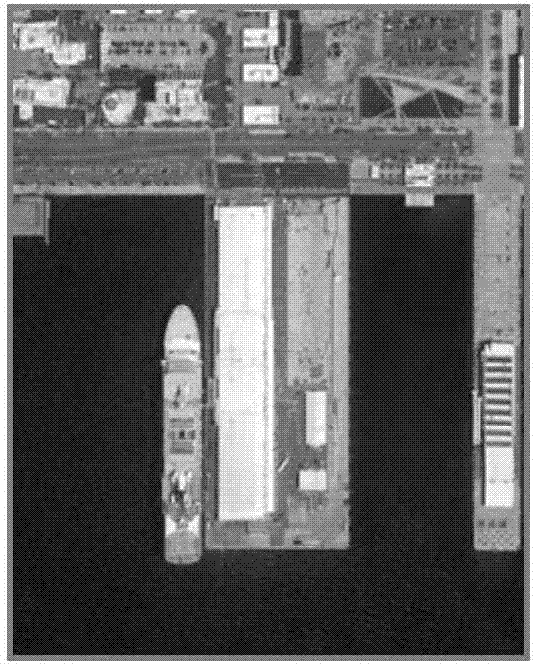Hybrid model decision-based remote sensing image berthing ship detection method
A hybrid model and remote sensing image technology, applied in image enhancement, image analysis, image data processing, etc., can solve the problems of difficult to achieve effective segmentation of berthing ships and wharves, poor generalization, and inability to extract boundary contours.
- Summary
- Abstract
- Description
- Claims
- Application Information
AI Technical Summary
Problems solved by technology
Method used
Image
Examples
Embodiment Construction
[0017] specific implementation plan
[0018] Aiming at the shortcomings of the above-mentioned prior art, the invention realizes the screening of ship candidate areas from large-scene port images through rapid water body segmentation and omni-directional two-dimensional cross-scanning processing; and proposes a port based on a hybrid decision-making method The ship detection method realizes the accurate identification of the ship target in the candidate area.
[0019] Figure 2(a) is a grayscale image of a ship berthing in a port; Figure 2(b) is a binary image of a ship berthing at a port after rapid water segmentation; Figure 2(c) is a combination of horizontal and vertical dimensions Suspected abnormal blocks obtained by two-dimensional cross-scanning of .
[0020] Fig. 3(a) is a grayscale image of a ship berthing in a port; Fig. 3(b) is a suspected candidate area where the suspected outlier block is obtained through omnidirectional and double-dimensional cross-scanning; Fig...
PUM
 Login to View More
Login to View More Abstract
Description
Claims
Application Information
 Login to View More
Login to View More - R&D
- Intellectual Property
- Life Sciences
- Materials
- Tech Scout
- Unparalleled Data Quality
- Higher Quality Content
- 60% Fewer Hallucinations
Browse by: Latest US Patents, China's latest patents, Technical Efficacy Thesaurus, Application Domain, Technology Topic, Popular Technical Reports.
© 2025 PatSnap. All rights reserved.Legal|Privacy policy|Modern Slavery Act Transparency Statement|Sitemap|About US| Contact US: help@patsnap.com



